Travelling by bicycle is a liberating experience and a demanding physical and mental challenge. The increasing popularity of electric bikes could make cycling more accessible, with the motor assistance allowing you to conquer hills with less effort and go further and faster. Yet e-bike touring or e-bikepacking comes with a different set of challenges. Andrew Flood, an author of the Ebike Touring Life YouTube channel, shared with me his insider tips on travelling on an e-bike.
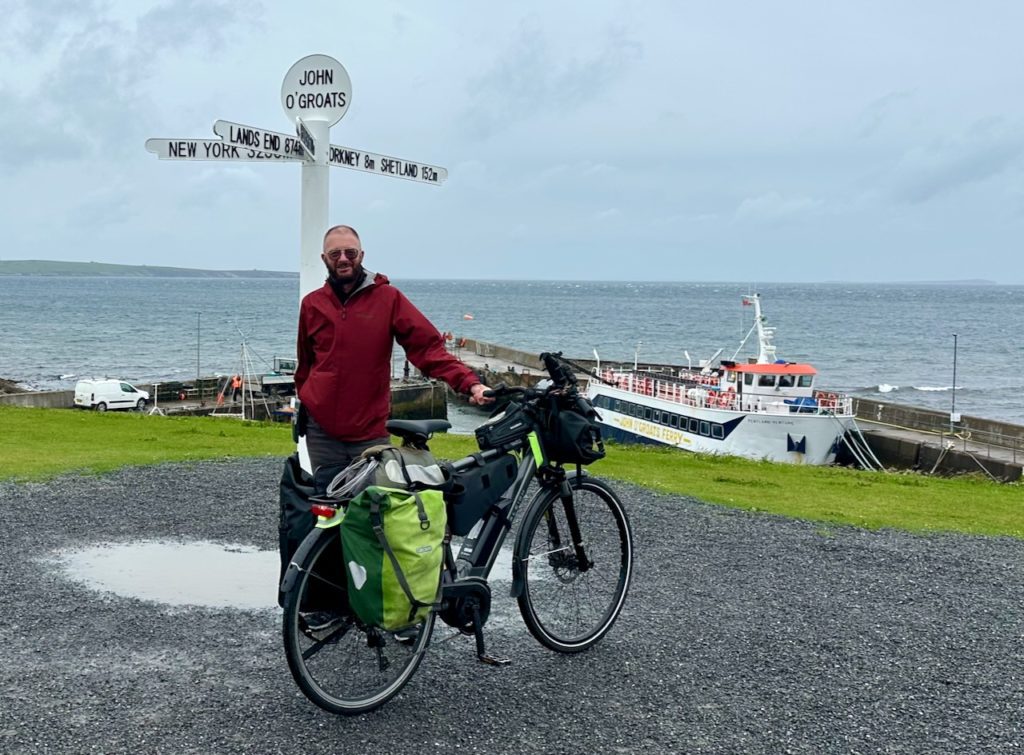
I’ve never really seriously thought about bike touring on an e-bike. I don’t find it old people’s thing or cheating, not at all. It simply always seemed like too much hassle.
I thought the battery range would limit my freedom and force me to plan my route more meticulously, not being able to roam the remote areas or wild camp.
But then, on some bike touring forum, I found Andrew, an Irish bloke who seemed to have some incredible adventures on an e-bike, including sleeping in his tent and going off the beaten path in Ireland and Scotland.
He seemed like someone who could change my mind about bike touring on an e-bike.
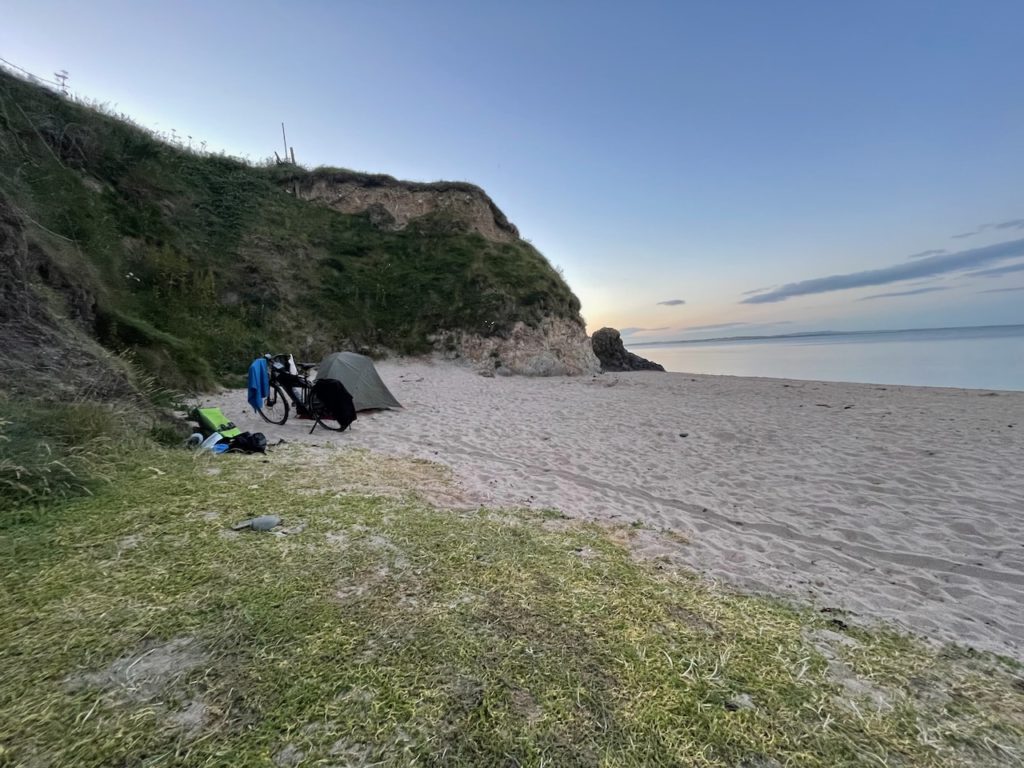
Travelling on an e-bike – how to deal with the range anxiety?
“This is the question I get the most”, laughed Andrew when I asked him about range anxiety. It was one of my main concerns about touring on an e-bike.
I used to have a city e-bike, and the battery range was one of the most annoying issues. Not only was it limited, but also unpredictable. The wind, temperature, elevation, and road surface strongly impact how far I could ride in one charge. I even ran out of battery in the middle of nowhere a few times. I couldn’t imagine planning a cycle tour with this level of unpredictability.
“Before your first trip, it’s good to find some steep hills that you can cycle to and from within a day as a test ride”, says Andrew. “I had some 18 % ascents not far from home and after cycling there, I had a good estimate how much energy my battery uses on steep climbs”.
Knowing what your battery is capable of and leaving some margin for the extra weight you’ll carry in your panniers (about 10 %, according to Andrew’s estimates) allows you to plan your adventures and avoid unpleasant surprises.
He also recommends carrying a spare battery. Two or three kilograms more is worth the peace of mind and the longer distance you can go before finding a place to charge the battery.
“I also have a fast charger. It’s a bit heavier and more expensive than the regular one, but it’s worth it. I can fully recharge my battery in about two hours, so I usually stop at a bar or restaurant, eat something or have a few pints and leave with a full battery”, says Andrew.
E-bike touring and wild camping
Most people travelling by e-bike opt for credit-card touring and recharge the battery every night in their hotel room. But e-bike touring and wild camping are not exclusive.
Thanks to a fast charger and an additional battery, Andrew can enjoy one of the most rewarding parts of bikepacking and bike touring – sleeping in a tent in the wild.
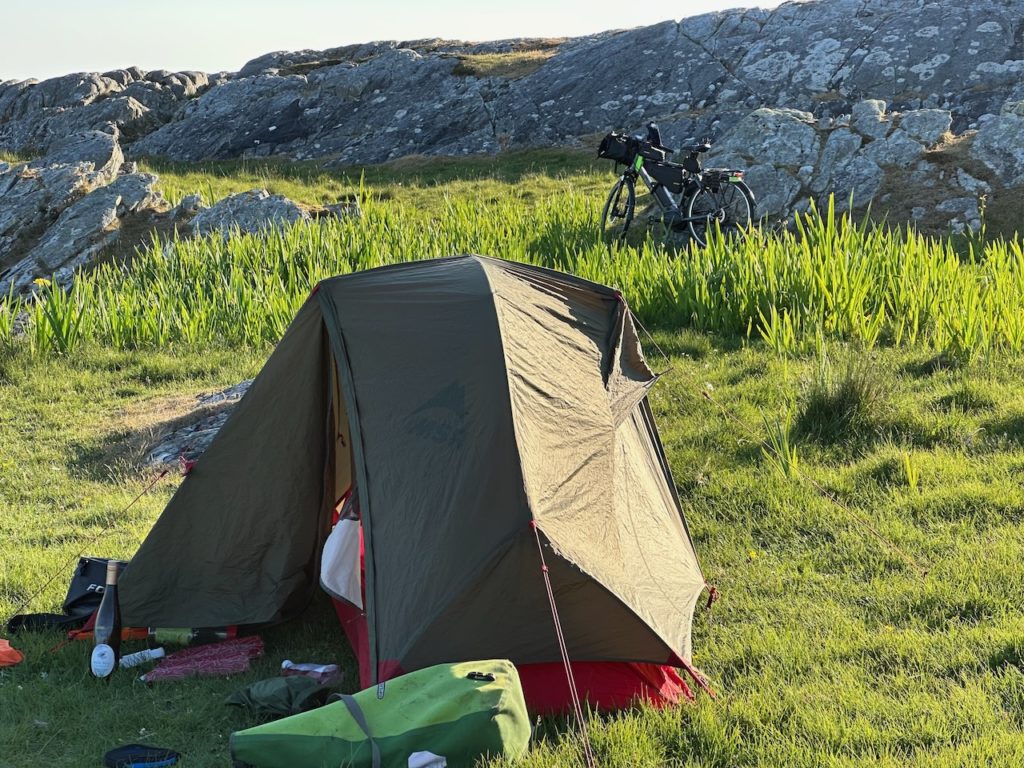
“I usually sleep in a hotel or B&B once in about eight nights, not really for the battery’s sake. It’s just nice to have a comfortable bed and a shower now and then”, says Andrew.
During his trip around Scotland, there were fewer pubs and restaurants where he could charge the bike. But he took ferries to different islands and could find a place to plug in the battery in most ferry terminals while waiting for the boat.
E-bike touring and route planning
Travelling on an e-bike requires additional route planning compared to traditional cycle touring. Your battery range determines how many kilometres you can do every day. It’s also crucial to find a place to recharge the battery.
“Before the first trip I did in Ireland, I would spend a lot of time on Google Maps and mark all pubs and restaurants where I could charge my battery. Now, I don’t bother with that so much. In most places in Europe, it’s not a problem. Of course, it would be more complicated if you choose a very remote route”, explains Andrew.
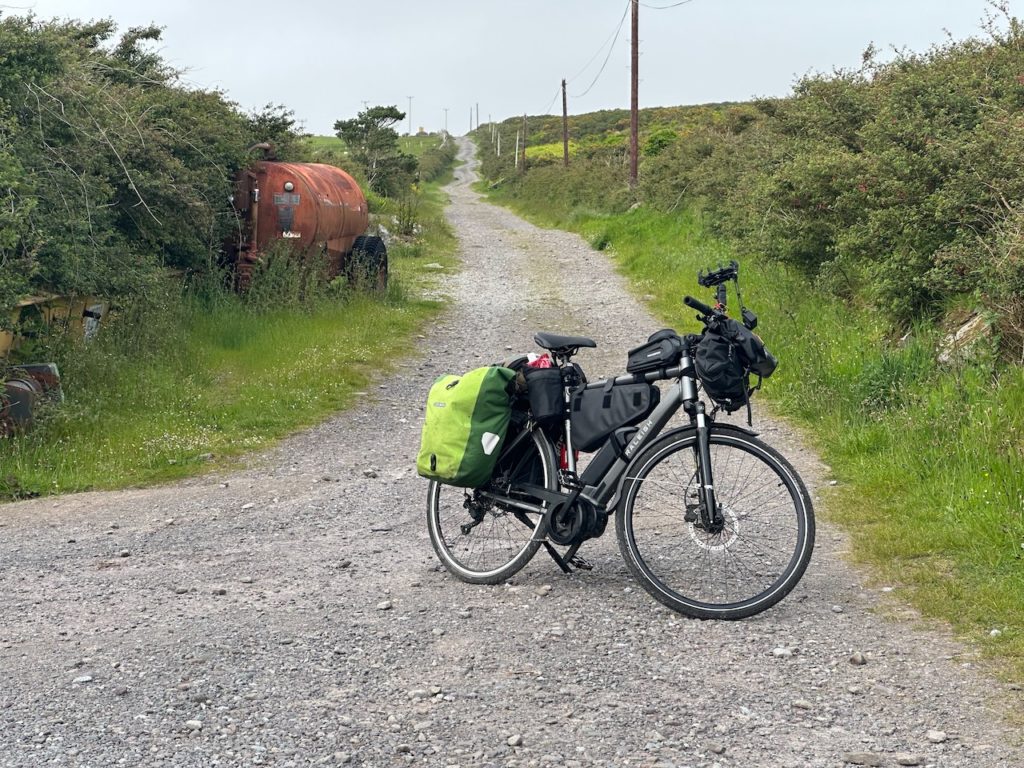
E-bike touring: how can you save the battery?
Some tips and tricks can help your battery support you for longer. One of the most important ones is staying in the Eco mode as much as possible.
“I stay in the eEo mode about 90 % of the time”, says Andrew. “In the morning, I can usually manage with less support because your legs are not tired yet. And in the afternoon, it helps a lot to get extra power from the motor, especially mentally, with the last stretch.”
Even if you’re trying to save battery, sometimes it’s best to turn on the extra support, for example, if you’re having a tough morning. This way, you’ll tune into the rhythm and boost your morale. Play with different settings, listen to your body, and check what works best for you.
Low temperatures significantly affect the battery life and can cause it to drain much faster. Bring your battery in for the night when it gets colder. If you’re camping and the temperatures drop, you can even keep it in your sleeping bag to keep it warm.

Is an e-bike worth it?
You might wonder if using an e-bike for touring makes sense at all. How much support do you get from the battery? Is it worth the hassle of planning your route to charge the battery and the extra kilograms?
“I’ve done a few short trips on my regular bike. Usually, on the third day, my legs felt like they didn’t want to continue. On an e-bike, I managed to do 30 days of cycling in a row in Scotland”, says Andrew. “It’s also more pleasurable, especially up the hill. By the end of the day, when you’re exhausted, turning up the motor support can make the last kilometres much less painful.
The limitations and drawbacks of e-bike touring
If you decide to replace your regular bike with an electric one, you must accept a few drawbacks.
E-bikes are typically a few kilograms heavier than regular bikes, making them more difficult to carry if you encounter some stairs or obstacles. It’s also more tiresome to put them on a train.
Most airlines don’t allow bringing an e-bike on a plane (for battery-related safety reasons). If you plan a trip overseas, you’ll likely need to rent a bike.
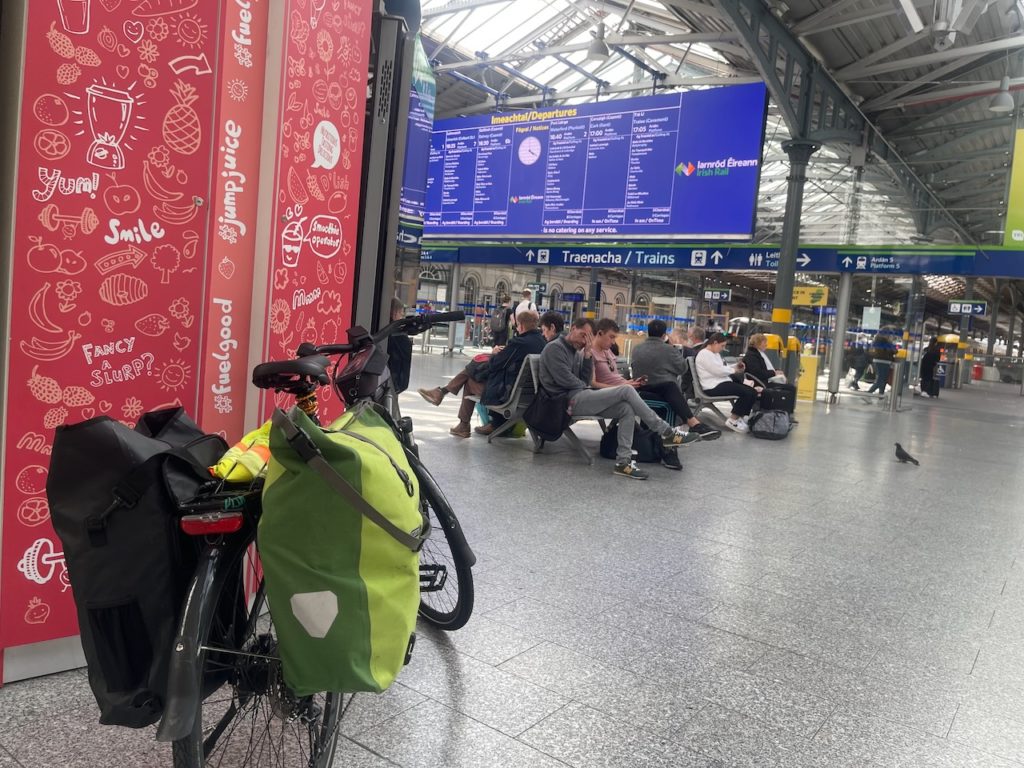
E-bike touring: maintenance and repair
You don’t need to know how to repair everything on your bike. “It’s enough to learn how to fix a flat tire”, says Andrew. “There’s a saying: don’t pack your fears. You’ll never be prepared for every situation and every issue with your bike. If something happens, you can hitchhike, call a taxi, or if you’re cycling in remote places, push the bike until you find a place where you can get help.”
Instead of learning how to fix every single fault of your bike, Andrew recommends always getting your bike serviced before every long tour (it doesn’t only apply to e-bikes but to traditional bicycles as well).
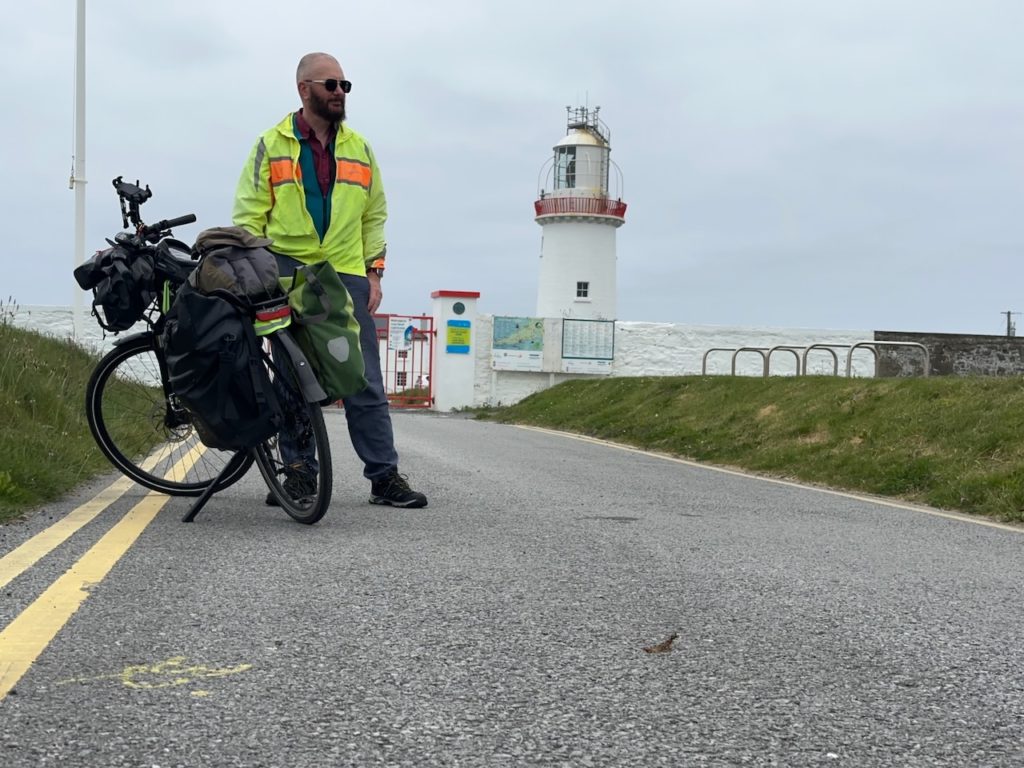
How to choose an e-bike for touring
If you want to try travelling on an e-bike, here are Andrew’s tips on choosing the right bike for touring:
- Many bike mechanics don’t want to work with e-bikes or don’t even have the tools to fix them. Buy a bike from a local dealer who can also service your bike before your tours.
- Choose a bike with a long battery range.
- Get a fast charger and an additional battery.
- Opt for a bike with an easily romovable external battery. This way, you can charge it in restaurants and pubs without bringing the entire bicycle in. It will also help you protect the battery from cold when the bike is outside for the night.
- Ensure the bike has eylets for inistalling a pannier rack.
- Get puncture proof tires.
Check out Andrew’s YouTube and Instagram channel for more tips and insights on e-bike touring!
Did you try travelling on an e-bike? Share your experiences and tips in the comments!
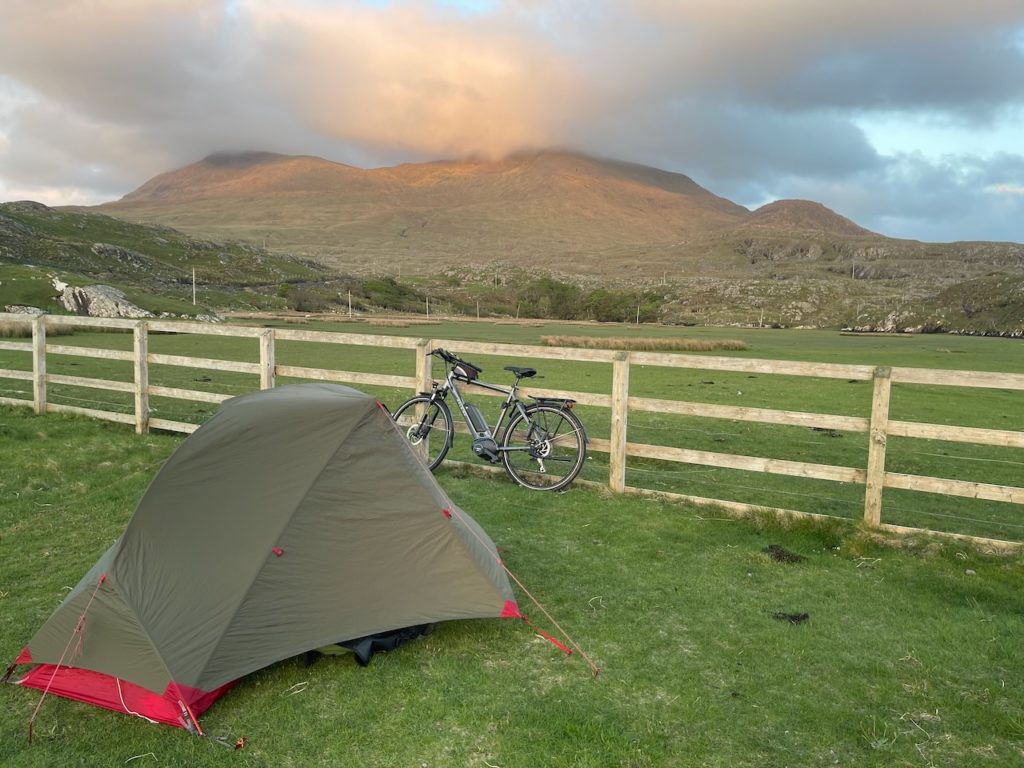
Pingback: Inspiration til cykelture rundt i Europa – Med tog fra Danmark til udlandet